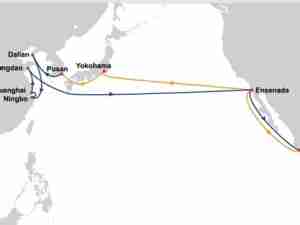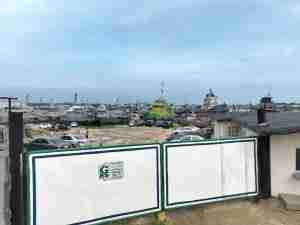Two major American terminal operators and an investment firm have already expressed interest in developing and operating container-handling facilities under the new port development plan. However, the entire development is being jeopardized by the proposed relocation of a 1,100-employee Food Distribution Center (FDC) on prime waterfront real estate.
Maritime and port interests are lobbying politicians and the Philadelphia
Regional Port Authority to relocate the FDC away from the area. The FDC, which does not require waterfront access, would ultimately block the port's access to the three Class One railroads that convene near the site-a major and unique advantage for the port.
During recent hearings Pennsylvania Governor Ed Rendell aides indicated he would reconsider the FDC relocation if legitimate operators showed interest in the Southport project. The Philadelphia Regional Port Authority commissioners indicated at their meeting on Friday, March 2, that they would work with port stakeholders before rendering a final decision.
Pennsylvania State Rep. William F. Keller, a former longshoreman, has called the commercial port development "a dream for Philadelphia we have been anticipating for 30 years. When words get around about the potential for this proposal, the offers will be coming in by the truckload. This is a boon for our region." He added: "More jobs for America in industry is what we need."
"With the congestion at West Coast ports, the ship size restrictions of the Panama Canal and the growing importance of the Suez Canal because of its ability to accommodate the giant ships coming on line, Philadelphia has the potential of being a major player in globalization," said Uwe Schulz, President of the Ports of the Delaware River Marine Trade Association (PMTA) that represents waterfront employers.
"The Southport location, which encompasses the Philadelphia Navy Yard, provides great hope of bringing jobs back to a shrinking employment market here and allow our region to take a significant role in the world trade arena," said Mr. Schulz. He noted that Philadelphia is already the largest breakbulk-handling harbor in the East Coast.
"Philadelphia is the only United States port with direct access to three Class One railroads and destroying that unique benefit would be a tragedy.
In addition, access to the interstate highway network is another direct advantage," said Dennis Rochford, President of the Maritime Exchange of the Delaware River and Bay, which represents nearly 300 maritime businesses.
The PMTA and Maritime Exchange are among a group of associations representing diverse interests in the Port of Philadelphia who have united on this issue. The others are the International Longshoreman's Association and a cadre of trade associations and related private enterprises, known as The Maritime Stakeholder Group.
"With the CSX, Norfolk Southern and the Canadian Pacific rail lines calling within yards of the new terminal locations, cargo moving through our port can be swiftly transported to final destination-including to Canada," said Rochford. Access to these railheads would be blocked by a proposed four-lane elevated highway needed to access the FDC.
Said Boise Butler, President of Local 1291, the largest ILA local in Pennsylvania: "We are hoping that the genuine interest of two operators will allow those that are supporting the FDC to realize what a major harbor development can mean in terms of the local economy and increasing potential employment."
The port is caught in a web of issues that can either diminish its role in world trade or make it the East Coast's destination of the future. Casino development to the north of the proposed Southport development is underway and will choke access and viability of waterfront property there. The FDC relocat








